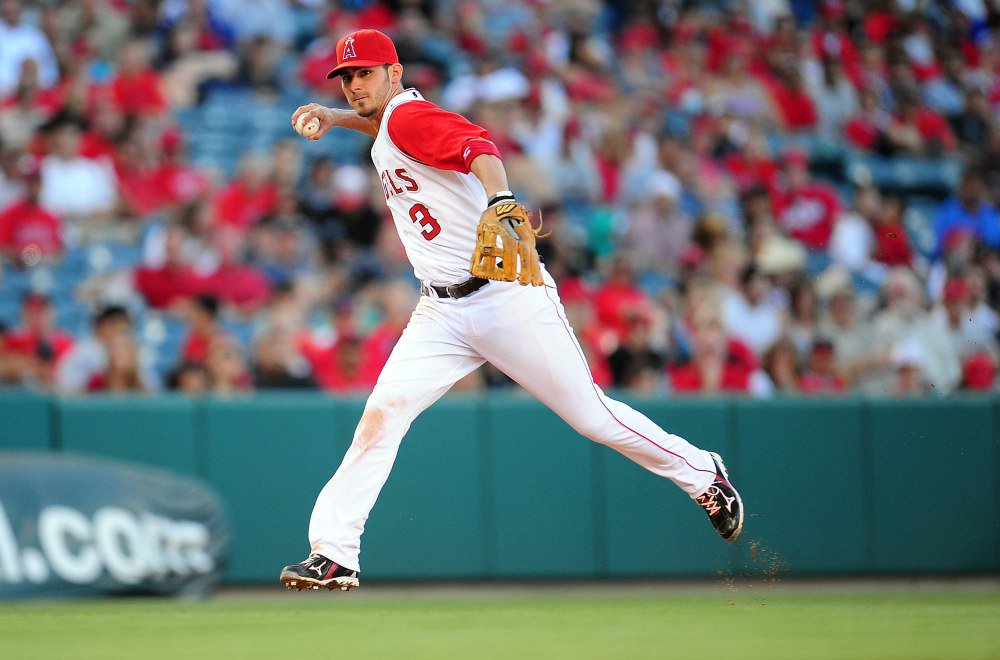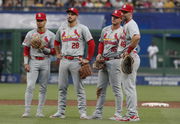

The world of Major League Baseball is a tough one to survive in. More than the players that play on this international stage are the players that almost made it. ‘Almost’ is a heavy word here. Imagine this – Hoping to witness the roaring crowd only to realize your career is over even before it started. Such is the story of many a player who almost made it to the big leagues.
Watch What’s Trending Now!
While sometimes injuries can hinder the seasons of capable players, other times one supposed slump becomes a never-ending streak of poor performances. In a fast-paced search for lucrative talent, insufficient time to recoup more often than not becomes a sign of failure. But what are these players up to now if not MLB?
ADVERTISEMENT
Stuck at the first base: Prospects who could not score in the big league including No. 2 Brandon Wood
Being filtered out as a prospect is always great news. In fact, it gives a sense that the club might anytime call them up to play on the MLB stage. However, sometimes prospects might not really walk on the standard path initially carved for them. Among a few stuck at the first base, one name stands out. Brandon Wood.
Anxiety, expectations, failure: A can't-miss kid starts over. @OGTedBerg on Brandon Wood: https://t.co/gKoe0Juk18 pic.twitter.com/FvjHPuht1G
— USA TODAY MLB (@usatodaymlb) March 30, 2016
This was the man who was called “the next Cal Ripken,” by a rival manager. Even Baseball America ranked Wood third among all prospects in the sport entering 2006. This was right behind the current Los Angeles Angels left fielder Justin Upton and ahead of future big league stars Justin Verlander, Prince Fielder, Jon Lester and Ryan Braun. His stats were impressive. In 2006, he hit 25 homers at double-A Arkansas. And sent 23 dingers flying home in at triple-A Salt Lake in 2007. Despite appearing bright, his future took an unexpected turn.
ADVERTISEMENT
The sharp downturn started in 2008. It was his first extended big league stint, when he hit .125 with a .352 on-base-plus-slugging percentage in 29 games. The Angels who were aggressively approaching winning could not be patient with Wood. It so happened that with Wood struggling more he played less. And this in turn affected Wood more. Eventually, success came to him, though not in the form of Baseball glory. As of present, he believes, “I feel like I’m much better in this next chapter than I would have been if I didn’t go through those struggles.”
Top Stories
Toronto Loyalist Raises Alarm as Shocking Bo Bichette Update Puts Blue Jays’ 2026 Dreams on the Brink

Red Sox’s Alex Bregman Fallout Becomes Evident as Two MLB Rivals Ignite Fierce Bidding War, per Report

$275M Cardinals Star’s MLB Future All but Sealed as U.S. Sportscaster Asks $2.75B Team to Make Bold Move

Mets Become Leading Contender For 30YO Ex-Phillies Star after David Stearns’ Mega Offseason Misses, Per Insider

Kyle Tucker Throws Blue Jays Into Chaos as Ross Atkins Forced Into Harsh Job Cuts

ADVERTISEMENT
A pitch that never materialized: Pitchers who lost their stardom and potential with time including No. 3 Joba Chamberlain
The pitchers have been heavily affected by the high competition of baseball. Joba Chamberlain is a man who was once a blazing comet in the bullpen of the New York Yankees. He was grounded during the 2009 playoffs. Though he was a team leader in the regular-season appearances, he remained unused in the first couple of games games of the Division Series. Names of reliable relievers like Kerry Wood and Boone Logan left Chamberlain to the fringes.
Today as #OpeningDay2024 is upon us I think back (as I get butterflies tweeting this) and realize what an honor and privilege it was to stand on that line and know the hard work paid off. Enjoy the day fellas, No feeling like it! #ournationalholiday
— Joba Chamberlain (@Joba_44) March 28, 2024
There was a need for a flexible bullpen. In fact, Manager Joe Girardi emphasized the same too. But flexibility meant less opportunity for Chamberlain. His initial struggles in the season and a disastrous outing in September confirmed his demotion from “bridge to Rivera” to a strikingly less prominent role. On one hand, Chamberlain expressed his willingness to pitch. On the other, it was clear that the Yankees’ bullpen had moved on. And in the end, the club left him on the sidelines. Such is the story of the once-bright prospect whose flame dimmed in time.
ADVERTISEMENT
Careers Who Could Have Been Different: Reasons that failed them
While the world of baseball prospects is fascinating it is fraught with uncertainty. Teams invest millions and relentless hours scouting and developing young players. But sometimes, their hopes to unearth the next superstar goes in vain. On the other side of the coin, for players, the road from minor league to big league mainstay is littered with fallen angels – players who, for a multitude of reasons, never lived up to the hype.
The tales of Greg Miller and Adam Miller are cautionary stories of how quickly a promising career can be derailed. While both pitchers were considered top prospects, with Miller even surpassing future Cy Young winner Zack Greinke in rankings. But shoulder and elbow issues, respectively cropped up. In the end, they were robbed of their initial potential.
ADVERTISEMENT
Similarly, Tyler Kolek, who was a high school phenom famous for his triple-digit fastball, saw his trajectory drastically altered by Tommy John surgery. He ended up getting limited to a handful of professional innings only. These cases underscore the fragility of young arms. What appears just like a minor setback, could have a devastating effect on careers that are about to grow.
Sure, injuries play a role in prospect busts. But some players simply don’t mirror their minor league dominance to the major leagues. Bobby Brownlie, a highly regarded college right-hander, could not perform as intended in the big leagues.
ADVERTISEMENT
Chuck Lofgren, is another player, a two-way talent, who grappled with finding his footing as a pitcher. Though he showed strength in the minors, something about the majors did not do him well. It is this disconnect between minor and major league performance which highlights the difficulty of scouting and projecting future success. This leads one into knowing which teams misread cues and ended up making improper predictions.
MLB team who shared the ordeal with them: From the New York Yankees to the Giants
MLB teams sometimes are prone to making mistakes in evaluating their prospects. Brandon Wood is one such name from the Los Angeles Angels that comes up as a power-hitting shortstop. He was projected for greatness on the basis of his minor league exploits. Unfortunately his lack of plate discipline hindered him in the big leagues.
ADVERTISEMENT
Read More : MLB Draft 2024: Can’t-Miss Prospects Atop Every Team’s Wish List
Domonic Brown was another touted slugger of the Philadelphia Phillies. Despite enjoying a brief All-Star caliber season he couldn’t sustain the required level of production. Jesús Montero, from the Yankees also went through a spree of disappointment bringing the Yanks heavy scrutiny. Examples like these highlight that teams too can make mistakes in scouting and developing.
Teams are consistently learning and adapting. In this process, they might identify future stars better. Though the stories of these fallen prospects are painful, they offer valuable lessons for teams. Afterall, it needs a certain level of challenge to unearth rewarding next generation big league stars.
ADVERTISEMENT
ADVERTISEMENT
ADVERTISEMENT
ADVERTISEMENT

